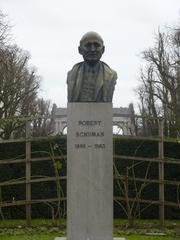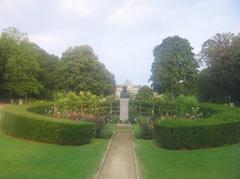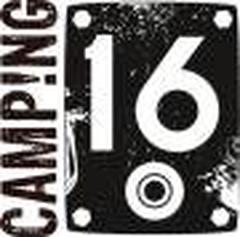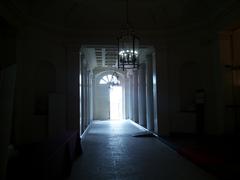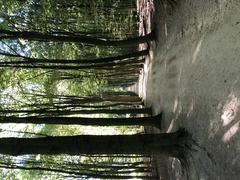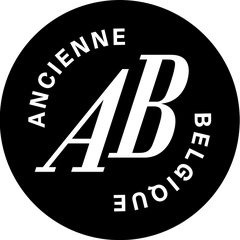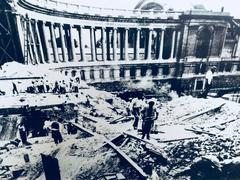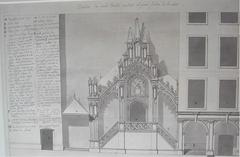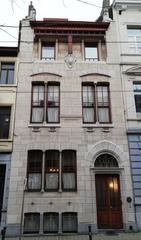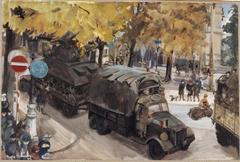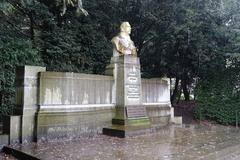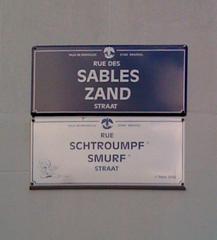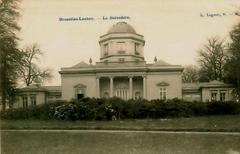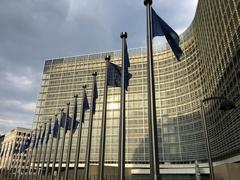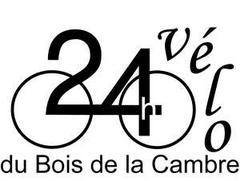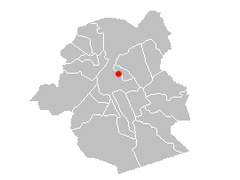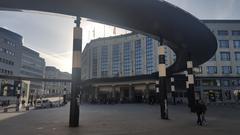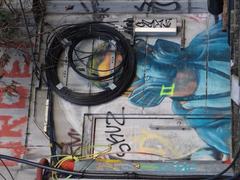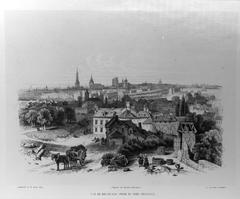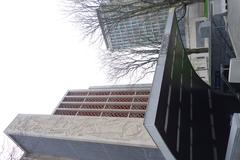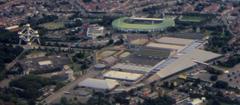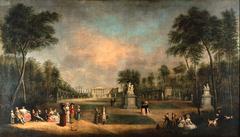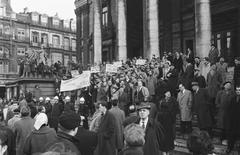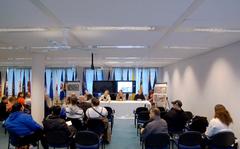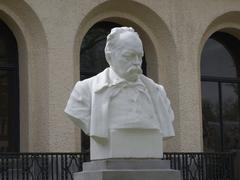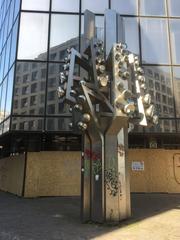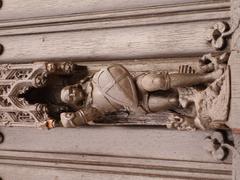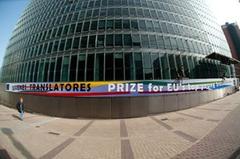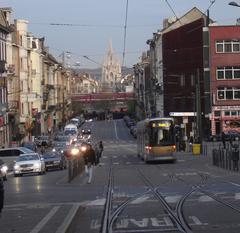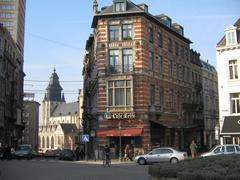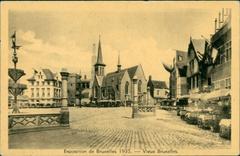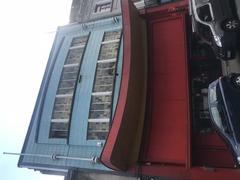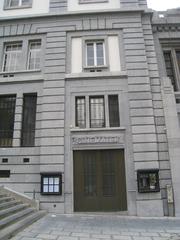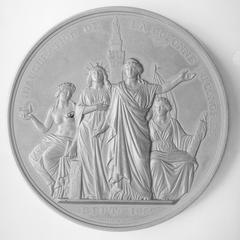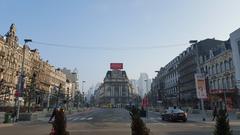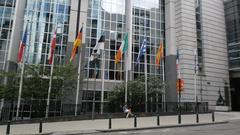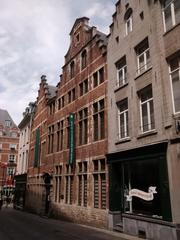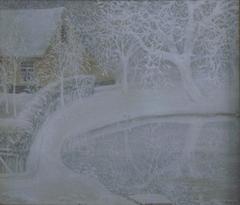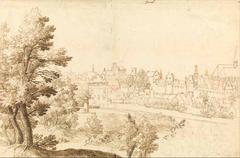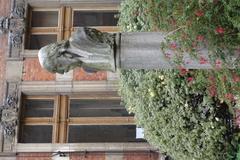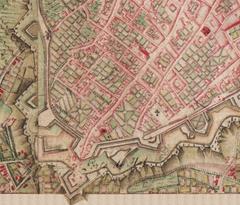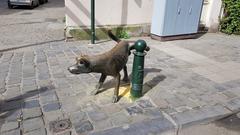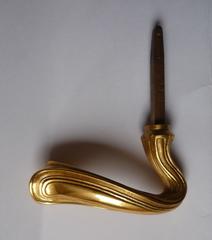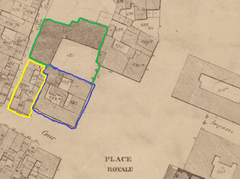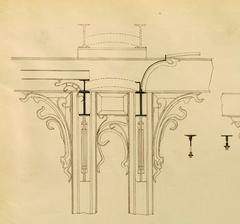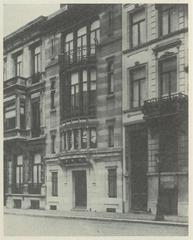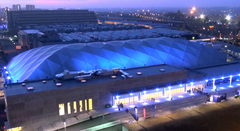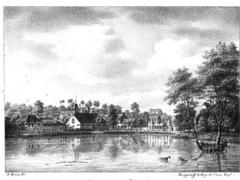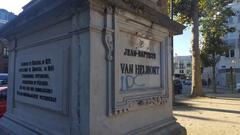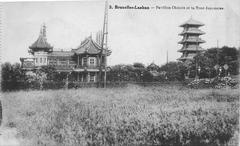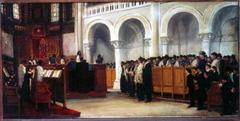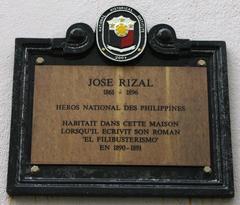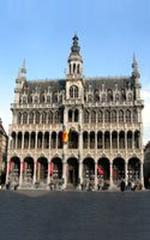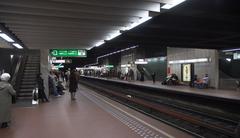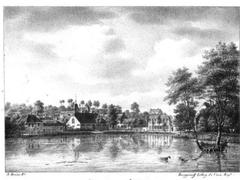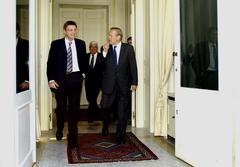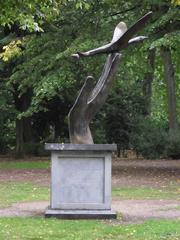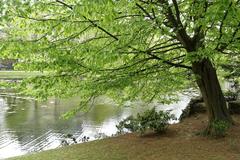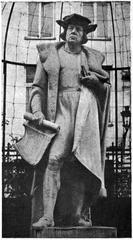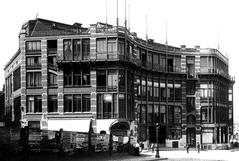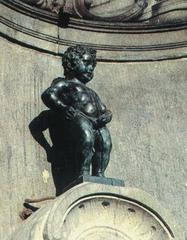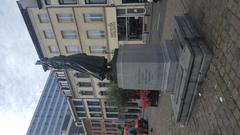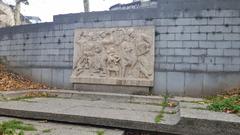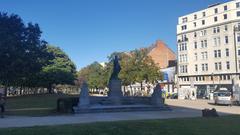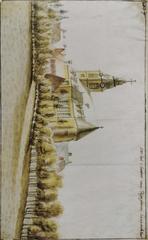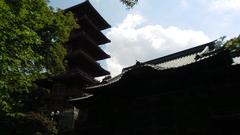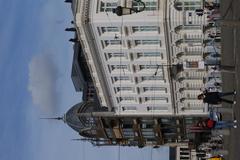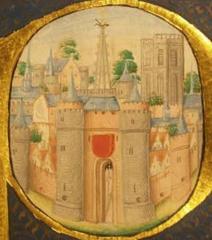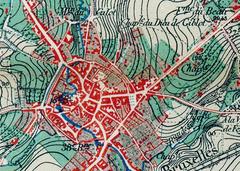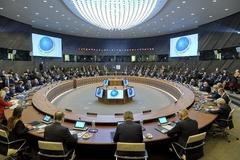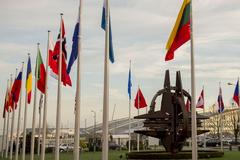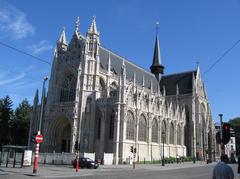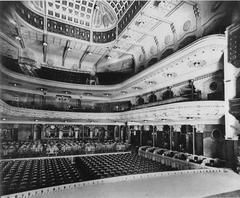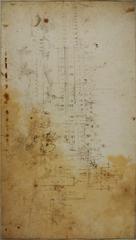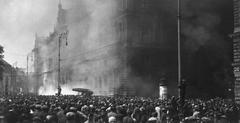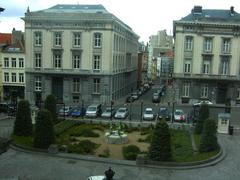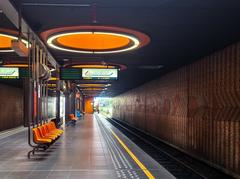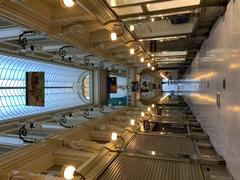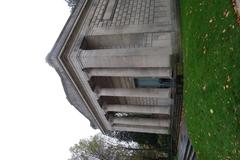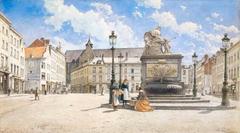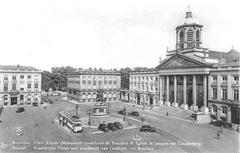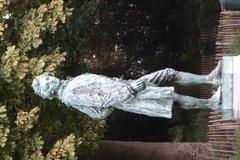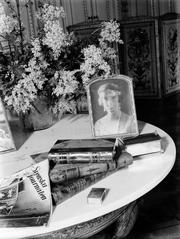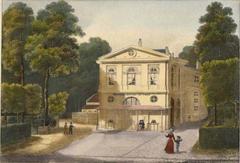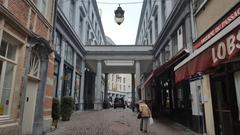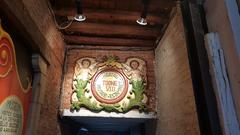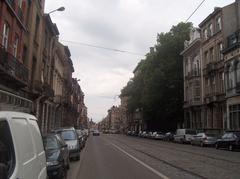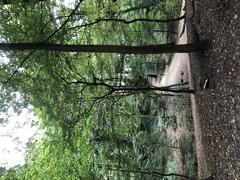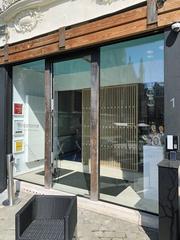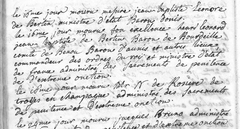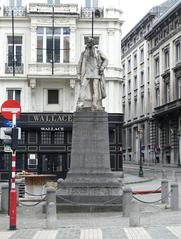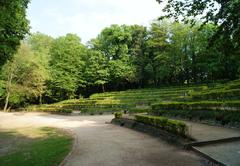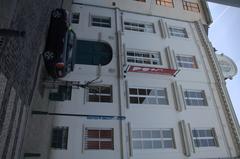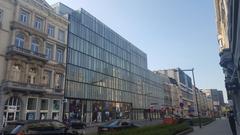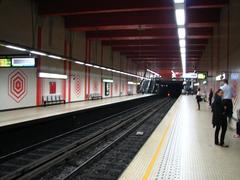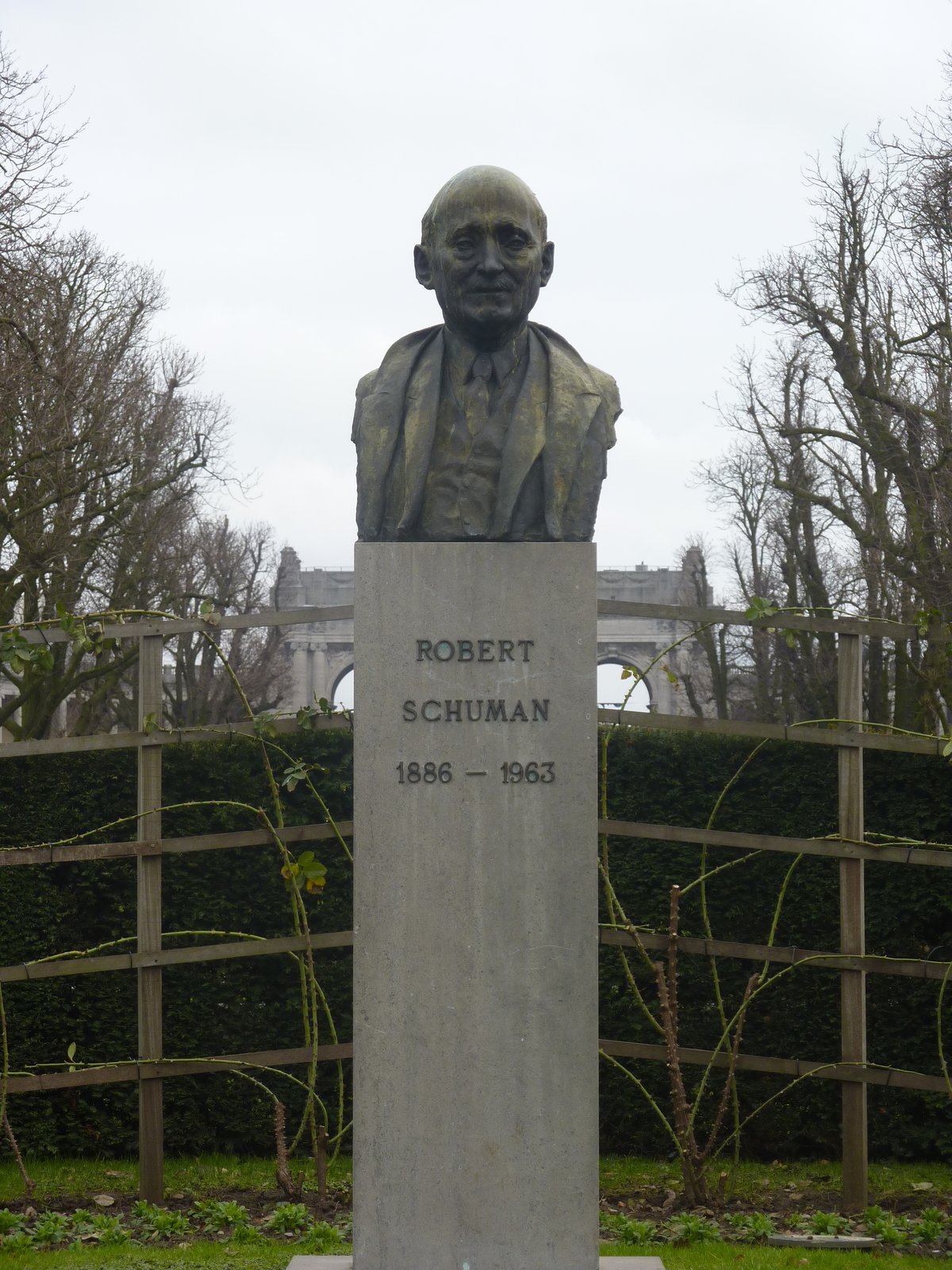
Bust of Robert Schuman in Brussels: Visiting Hours, Tickets, and Historical Significance
Date: 14/06/2025
Introduction
Brussels, the heart of the European Union, is home to numerous landmarks celebrating Europe’s journey toward unity and peace. Among these, the Bust of Robert Schuman stands as a powerful tribute to one of the EU’s founding fathers. Situated in the picturesque Parc du Cinquantenaire, near the European Quarter, this bronze sculpture honors Schuman’s pivotal role in postwar reconciliation and European integration. Crafted by Belgian sculptor Nat Neujean, the monument is not only an artwork but a symbol of cooperation, democracy, and shared European values. This guide details the bust’s historical significance, artistic context, visiting information—including hours and accessibility—and offers practical tips to enhance your experience. Whether you are a history enthusiast, student, or traveler, this article will help you appreciate the importance of the Robert Schuman bust and plan your visit effectively (Evendo, cehibrux.be, be-monumen.be).
Table of Contents
- Introduction
- Historical Context and Legacy of Robert Schuman
- Artistic Vision and Symbolism of the Bust
- Location and Accessibility
- Visiting Hours and Tickets
- Guided Tours and Educational Visits
- Photographic Spots
- Nearby Attractions and Travel Tips
- Commemorative Events and Public Engagement
- Frequently Asked Questions (FAQ)
- Conclusion
Historical Context and Legacy of Robert Schuman
Early Life and Political Career
Robert Schuman (1886–1963), born in Luxembourg and later a French citizen, was shaped by a region marked by shifting borders and conflict. His experiences inspired a vision for European cooperation and peace. After studying law in Bonn and Strasbourg, Schuman became a deputy for Moselle in 1919. Throughout his career—including roles as French Minister of Finance, Prime Minister, and Minister of Foreign Affairs—he championed Franco-German reconciliation and advocated for a united Europe (Evendo).
The Schuman Declaration and European Unity
On May 9, 1950, as French Foreign Minister, Schuman delivered the historic Schuman Declaration. This proposal called for the joint management of French and German coal and steel production, an initiative that would make war between the two nations “not merely unthinkable, but materially impossible.” The result was the European Coal and Steel Community (ECSC), the first step toward what would become the European Union. May 9 is celebrated as Europe Day, commemorating this significant milestone.
Schuman’s Role in European Integration
Schuman was instrumental in shaping the Treaties of Rome in 1957, which established the European Economic Community (EEC) and EURATOM, laying the foundations for the EU’s economic and political structures. As President of the European Parliamentary Assembly (1958–1960), he promoted democracy, the rule of law, and human rights—core values of the European Union today (Evendo).
Artistic Vision and Symbolism of the Bust
Crafted by Nat Neujean in 1964 and inaugurated in 1987, the bust is a fine example of expressive portraiture. Cast in bronze and set on a blue stone base, it presents Schuman with a dignified, contemplative expression, his gaze directed upward—conveying vision and resolve. The restraint in iconography, focusing solely on Schuman’s visage, reflects his humility and the sincerity of his ideals. The absence of decorative symbols underscores the focus on Schuman’s humanity and legacy, while the bronze and blue stone symbolize permanence and Belgian heritage (cehibrux.be).
Location and Accessibility
Placement and Setting
The bust is set within Parc du Cinquantenaire, at Avenue de la Joyeuse Entrée, facing the Robert Schuman Roundabout and the European Quarter, near the main EU institutions. Its tranquil park setting encourages reflection, while its proximity to the European Parliament and Commission reinforces the ongoing relevance of Schuman’s vision (be-monumen.be).
Physical Accessibility
The monument is at ground level on a paved area, accessible to visitors with reduced mobility or wheelchairs. Wide, well-maintained paths and nearby benches offer comfort for all visitors.
Transport Connections
- Metro: Schuman station (lines 1 and 5) is the nearest stop, providing direct links to city landmarks and Brussels Airport via the Schuman-Josaphat tunnel.
- Bus and Tram: Several bus lines (12, 21, 36, 60, 79) and tram lines (7, 25) serve the area.
- Train: Brussels-Schuman railway station connects regional and intercity lines.
- Car: Limited paid parking is available nearby; public transportation is recommended.
- Bicycle/On Foot: Dedicated bike lanes and the Villo! bike-sharing system serve the area.
Visiting Hours and Tickets
The Bust of Robert Schuman is accessible outdoors in Parc du Cinquantenaire 24/7. There are no entrance fees or tickets required—visitors can stop by at any time during park opening hours. If planning to visit nearby museums (e.g., Royal Museum of the Armed Forces, Autoworld), consult their websites for ticketing and opening hours (Evendo).
Guided Tours and Educational Visits
Many guided tours of the European Quarter feature the bust as a highlight, offering rich context on Schuman’s role and the EU’s history. Tours can be booked through official Brussels tourism offices or online platforms, with options in multiple languages. Schools and history groups often visit around Europe Day, and educational plaques near the bust explain Schuman’s legacy (cehibrux.be).
Photographic Spots
The bust’s positioning, with the lush park and the European Quarter’s architecture in the background, offers excellent photo opportunities. Early morning and late afternoon provide the best natural light. Visitors are encouraged to respect the monument and avoid climbing on the sculpture or pedestal.
Nearby Attractions and Travel Tips
- Royal Museum of the Armed Forces and Military History
- Autoworld Brussels (vintage cars museum)
- Art & History Museum
- Berlaymont Building (European Commission HQ)
- Sections of the Berlin Wall and other EU-themed artworks
Travel Tips:
- Wear comfortable shoes and be prepared for changing weather.
- Public restrooms and cafés are available in the park and nearby.
- The park is generally safe, with a strong police presence due to EU institutions.
- The area is under video surveillance for additional security.
Commemorative Events and Public Engagement
The bust is a focal point for Europe Day (May 9), marked by official ceremonies, guided tours, and cultural events celebrating European unity. The park and European Quarter regularly host public events—check local event calendars for details (uef-belgium.be).
Frequently Asked Questions (FAQ)
Is there an entrance fee to visit the Bust of Robert Schuman?
No, the bust is outdoors in a public park and can be visited free of charge at any time.
What are the best times to visit?
Daylight hours are best for safety and photography; the park is open from dawn to dusk.
Is the site wheelchair accessible?
Yes, paved paths and accessible public transport make visiting easy for all.
Are guided tours available?
Yes, many local tour operators feature the bust in their European Quarter tours.
Can I take photographs?
Absolutely—just respect the monument and avoid climbing on it.
Conclusion
The Bust of Robert Schuman in Brussels stands as a living symbol of European unity, peace, and shared heritage. Its accessible location, lack of entry fee, and proximity to major EU institutions make it a must-see for anyone interested in Europe’s past and present. By visiting the monument, especially during events like Europe Day, travelers can connect with the ideals that continue to shape the continent. Use digital resources such as the Audiala app for interactive guides, and explore surrounding attractions to deepen your understanding of Europe’s journey toward cooperation and integration.
For Further Information and Official Resources
- Evendo: Robert Schuman Bust in Brussels – Visitor Guide & Historical Significance
- CEHiBrux: History, Significance, and Visitor Information
- Be Monumen: Hours, Access, and Tips
